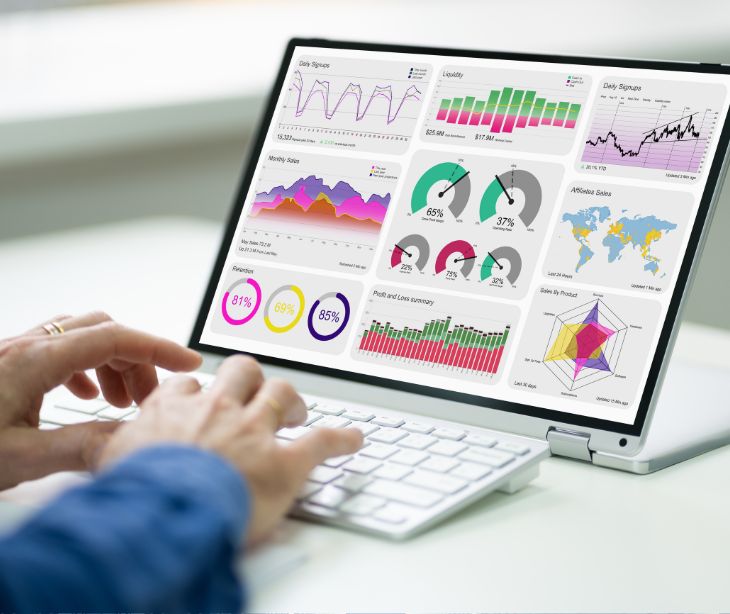3 min read
Using behavioral analytics in HIPAA compliant email marketing
Kirsten Peremore
April 01, 2024

Given that 90% of organizations depend on email engagement to gauge content performance, behavioral analytics allows organizations to tailor HIPAA compliant email campaigns precisely to the preferences and behaviors of their audience by analyzing data such as open rates.
Is behavioral analytics HIPAA compliant?
Behavioral analytics allows healthcare organizations to tailor communications to meet patient needs in a dynamic approach. Whether or not behavioral analytics is HIPAA compliant centers around how the data is used and analyzed. In short, behavioral analytics as a practice can be HIPAA compliant if specific steps are performed throughout the life cycle of this data. These steps include:
Collection:
- Only collect the minimum amount of protected health information (PHI) necessary for the intended purpose.
- Obtain explicit consent or authorization from patients before collecting data for analytics purposes, especially if the data collection will be used for marketing purposes.
- Apply de-identification techniques to remove or obscure PHI so that it cannot be traced back to individuals.
Storage:
- Encrypt PHI both at rest and in transit to protect against unauthorized access.
- Use access controls to make sure that only authorized personnel can access PHI.
- Maintain detailed audit trails of all access and actions taken with PHI to enable tracking and compliance reporting.
Data use:
- Use only the PHI that is directly relevant to the specific task or analysis.
- Make sure that any sharing of PHI with third parties (such as business associates) is governed by business associate agreements (BAAs).
- Apply data integrity measures to provide accuracy and consistency of PHI throughout its lifecycle.
How it works
- Email systems integrate tracking codes within the email content, often in pixels or link wrappers. When a recipient opens an email or clicks on a link, these codes send back data to the sender's email management system, capturing actions such as open rates, click-through rates, the time spent on the email, and whether the email was forwarded or deleted.
- This raw data is then aggregated and analyzed using statistical and machine learning algorithms to identify behavior patterns among email recipients. The analysis can reveal insights such as the most engaging content, optimal send times, and recipient preferences for certain types of messages or calls to action.
- Based on the analyzed behavior, recipients are segmented into different groups with similar interests, engagement levels, and interaction patterns. Segmentation criteria can include demographic information, but primarily focus on behavioral patterns such as responsiveness to specific topics, engagement frequency, and preferred content types.
- Email content, including subject lines, message bodies, images, and calls to action, is tailored to the preferences and behaviors of each segment. Personalization algorithms can dynamically adjust content in real-time based on the latest interactions.
- Behavioral analytics enables the automation of email campaigns based on specific recipient actions. For example, if a recipient clicks on a link related to a particular service, it can trigger a follow-up email related to that service.
- The impact of personalized emails is continuously monitored through key performance indicators (KPIs) such as conversion rates, click-to-open rates, and overall engagement. Insights from ongoing campaigns are fed back into the analytics system, refining the personalization algorithms and segmentation strategies to improve future email communications.
See also: Top 7 HIPAA compliant email marketing services
How does it improve HIPAA compliant email marketing strategies?
"Human behavior reflects cognitive abilities. Human cognition is fundamentally linked to the different experiences or characteristics of consciousness/emotions, such as joy, grief, anger, etc., which assists in effective communication with others."
Based on a 2023 study by BrainInformatics, human behavior offers a great deal of insight into the way individuals process and perceive information. Behavioral analytics assists in refining HIPAA compliant email marketing strategies by tracking and analyzing recipient interactions, such as open rates, click-through rates, and time spent on emails. This gives an insight into broad trends and a patient's targeted and specific personal preferences, such as topics of interest, preferred content formats, and the timing of email interactions.
By separating email recipients based on detailed behavioral data, healthcare organizations can tailor their messages with precision. This ranges from customizing subject lines to align with individual interests to selecting content that matches the historical engagement patterns of each segment. This level of personalization provides that information is highly relevant, boosting factors such as engagement rates. This is beneficial as patients can receive content that addresses their needs and behaviors, all within the framework of HIPAA compliant communication practices.
It also assists with the implementation of automation of trigger-based emails, sending targeted messages at moments when recipients are most receptive. This enhances the efficiency of email marketing campaigns and fosters a more dynamic and responsive communication channel that evolves in real time with recipient behaviors.
See also: HIPAA compliant email marketing
The process of implementing behavioral analytics in HIPAA compliant email
Methods of collecting data
- Digital interactions tracking
- Patient surveys and feedback forms
- Wearable devices and health apps
Using the data collected
- Use the information from the above collection methods to personalize patient communications. For example, if data shows the person prefers a certain type of health information, tailor the email content assigned to this person based on this preference.
- Find patients who may benefit from specific health programs (e.g., smoking cessation, diabetes management) based on their online behaviors and direct them to relevant resources.
- Automate personalized appointment reminders and follow-up communications based on patient interaction history.
The methods of analyzing behavioral data
- Data aggregation and segmentation
- Predictive analytics
- Continuous improvement
FAQs
What is behavioral data in email marketing?
This is information collected about how recipients interact with email campaigns, including opens, clicks, and time spent on the email.
Which is the most important metrics to track in email marketing?
Engagement rate, encompassing open rates and click-through rates.
What is an advantage of email marketing?
Its ability to provide targeted and personalized communication.
Subscribe to Paubox Weekly
Every Friday we'll bring you the most important news from Paubox. Our aim is to make you smarter, faster.




